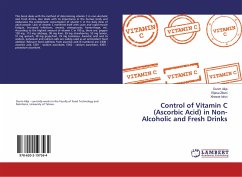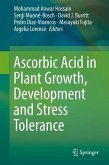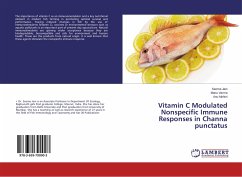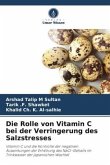This book deals with the method of determining vitamin C in non-alcoholic and fresh drinks, also deals with its importance in the human body and elaborates the problematic consumption of vitamin C in the daily dose of adult people. Lack of vitamin C manifests itself with: pain and rapid muscle fatigue, increased infections, anemia, osteoporosis, hemorrhage, etc. According to the highest amount of vitamin C in 100 g, there are: pepper 128 mg, 113 mg cabbage, 90 mg kiwi, 59 mg strawberries, 53 mg lemon, 51 mg spinach, 38 mg grapefruit, 23 mg tomatoes. Ascorbic acid and its sodium, potassium and calcium salts are widely used as an antioxidant food additive. Relevant food additives from ascorbic acid (E-numbers) are: E300 - ascorbic acid, E301 - sodium ascorbate, E302 - calcium ascorbate, E303 - potassium ascorbate.








